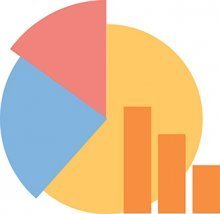By the Numbers - June 27, 2016
47%+
The percentage of female Veterans in a sample group using Veterans Health Administration primary care who "reported symptoms of insomnia that resulted in functional impairment," according to a research abstract presented at SLEEP 2016, the 30th Anniversary Meeting of the Associated Professional Sleep Societies LLC (APSS). The research, cited in an APSS press release, indicated that less than 1% of this group "had a diagnosis of a sleep disorder based on medical records."
“Results from the analysis provide a clinical decision tree identifying subgroups of women with high and low risk for insomnia symptoms,” said lead author Kimberly Babson, PhD, Research Health Science Specialist at the National Center for PTSD - Dissemination & Training Division, VA Palo Alto Health Care System. “These results can be used by primary care clinicians to identify women that fit within these subgroups for referral, assessment and intervention of insomnia symptoms in order to decrease risk for the psychological, physical, and psycho-social consequences associated with insomnia.”
47%+
The percentage of female Veterans in a sample group using Veterans Health Administration primary care who "reported symptoms of insomnia that resulted in functional impairment," according to a research abstract presented at SLEEP 2016, the 30th Anniversary Meeting of the Associated Professional Sleep Societies LLC (APSS). The research, cited in an APSS press release, indicated that less than 1% of this group "had a diagnosis of a sleep disorder based on medical records."
“Results from the analysis provide a clinical decision tree identifying subgroups of women with high and low risk for insomnia symptoms,” said lead author Kimberly Babson, PhD, Research Health Science Specialist at the National Center for PTSD - Dissemination & Training Division, VA Palo Alto Health Care System. “These results can be used by primary care clinicians to identify women that fit within these subgroups for referral, assessment and intervention of insomnia symptoms in order to decrease risk for the psychological, physical, and psycho-social consequences associated with insomnia.”

